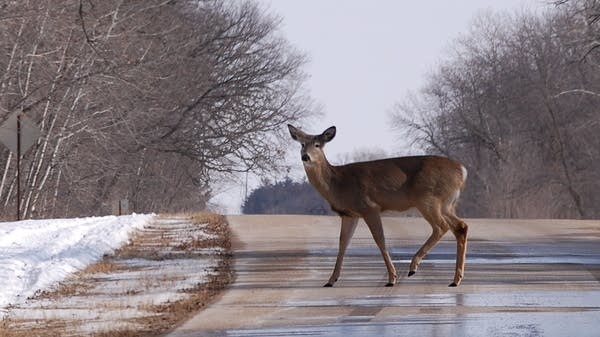Minnesota asked me to gather deer spleens for science. It wasn’t easy

A deer crosses a road in Kandiyohi County, near Sibley State Park, in March 2009. The DNR asked roughly 2,000 hunters to extract the spleens from any deer they might shoot this fall for a study on pesticides in deer.
Tom Weber | MPR News 2009
Go Deeper.
Create an account or log in to save stories.
Like this?
Thanks for liking this story! We have added it to a list of your favorite stories.


